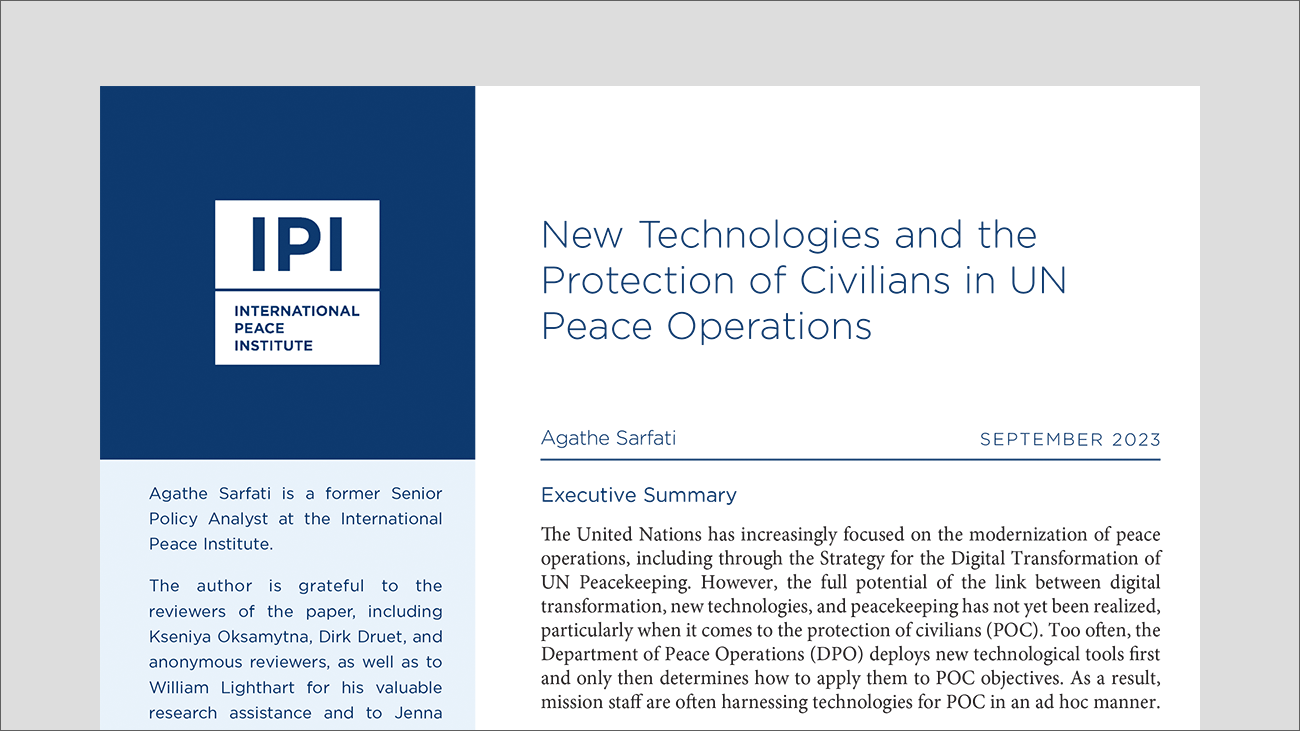
The United Nations has increasingly focused on the modernization of peace operations, including through the Strategy for the Digital Transformation of UN Peacekeeping. However, the full potential of the link between digital transformation, new technologies, and peacekeeping has not yet been realized, particularly when it comes to the protection of civilians (POC). Too often, the Department of Peace Operations (DPO) deploys new technological tools first and only then determines how to apply them to POC objectives. As a result, mission staff are often harnessing technologies for POC in an ad hoc manner.
One of the main ways new technologies can contribute to POC is through timely and effective early-warning mechanisms. Platforms like SAGE and Unite Aware can help missions analyze data on threats and violence against civilians. Intelligence, surveillance, and reconnaissance tools like satellite imagery and unarmed aerial vehicles (UAVs) can aid in the collection of such data. The monitoring of communication platforms can also provide contextual information and insight into trends in public opinion, giving clues about future waves of violence.
This paper attempts to contribute to the ongoing reflection on the interaction between new technologies and POC, particularly in relation to early warning. The paper reviews peace operations’ use of new technologies and data, which could be further used for early warning for POC. It then discusses the limitations and risks of the use of new technologies for POC, particularly around data protection and privacy. The paper concludes by calling for a theory of change for how new technologies can contribute to POC in peacekeeping operations.







